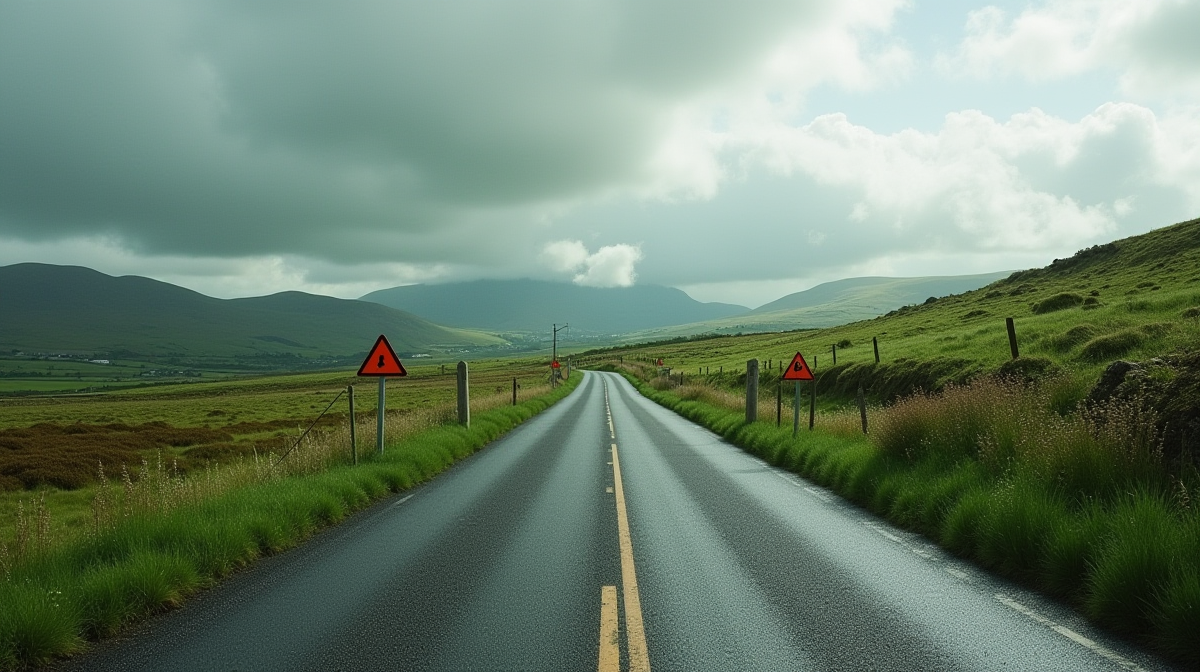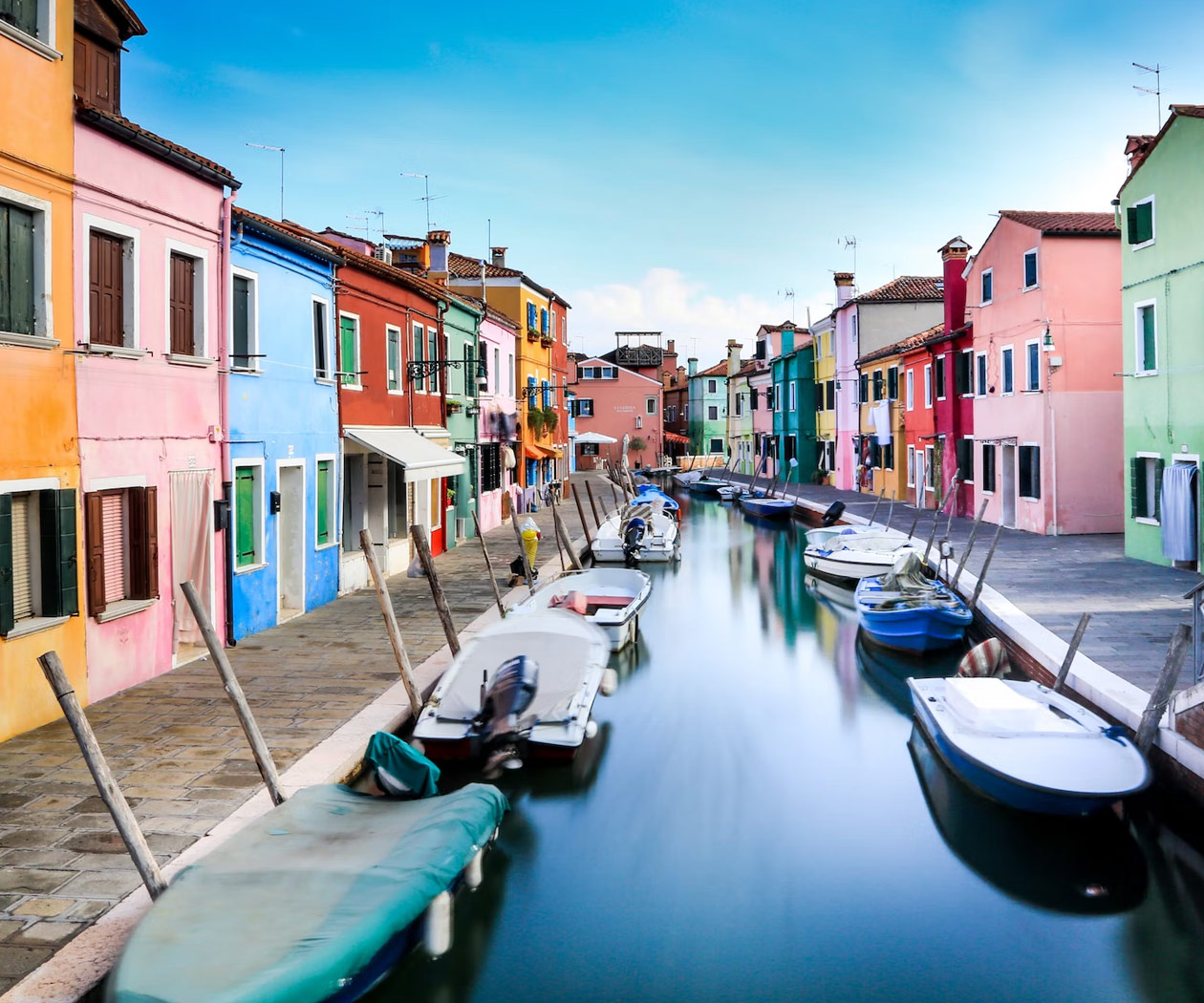Introduction
Ireland, the Emerald Isle, is an enchanting land, rich in unrivaled landscapes, historic sites, and culturally vibrant cities. However, it is notorious for its confounding driving rules, unusual road signs, different speed limits, and the universal practice of left-hand driving. This can create a set of challenges for tourists and perhaps even deter some from exploring this magnificent country by road. Complex road markings, unexpected speed limits and peculiar signage, misunderstood, can result in significant penalties, stressful situations, or even worse, dangerous driving circumstances.
However, fear of the unknown should not dictate your travel plans! We have a solution for you. This comprehensive guide titled “Mastering the Emerald Isle: Unraveling Ireland’s Driving Rules, Speed Limits & Mysterious Road Signs” is here to illuminate the path ahead. We’ve demystified Ireland’s traffic rules and regulations, provided explanations for common (and not so common) road signs that leave tourists scratching their heads, and offered clear guidance on maintaining appropriate speed limits to ensure safety. By the end of this guide, you will navigate Ireland’s roads with ease and confidence, transforming your travel experience into a most memorable one.
Mastering Left-Hand Driving in Ireland
In Ireland, left-hand driving is the rule of the road. Here’s what you need to know about navigating Irish highways and country roads with confidence.
Getting Used To Left-Hand Driving
Driving on the left side of the road might seem daunting if you’re coming from a right-hand driving country. It’s helpful to keep repeating the mantra “keep to the left” to yourself. You’ll also notice that your gear stick will be to your left, which can take a little getting used to.
I remember my first time driving in Ireland, and I kept fumbling around for the gear stick on the wrong side! However, with a little patience and a few more hours of practice, I found it quite natural.
Understand the Speed Limits
Ireland uses kilometres per hour, not miles, as the speed measurement. Residential areas typically have a limit of 50km/h, national roads are usually 100km/h and motorways have a limit of 120km/h. If you’re unsure, follow the speed of the local traffic – but remember to never exceed the posted speed limit.
Recognising Road Markings and Signs
Unlike some countries, Ireland does not have a standard road marking system. Understanding these can be a bit of a headache for visitors. For example, yellow lines indicate no parking at any time, while broken white lines mean that you may overtake if it is safe to do so. Always refer to the Transport Infrastructure Ireland’s guide for details.
Roundabouts
Roundabouts are common in Ireland. They may be daunting at first but remember – drivers already on the roundabout have right of way. Enter the roundabout when there is a safe gap in the traffic and always signal your intentions so other drivers know what you plan to do.
Narrow Roads
One particularly unique aspect of driving in Ireland is the narrow country roads. On my first journey along the winding roads of the Irish countryside, I often feared an oncoming car would side swipe me. But over time, I learned to remain patient and use the passing places to allow oncoming cars to pass.
Final Notes
The key to mastering left-hand driving is to stay calm, confident, and focused. It may feel strange at first, but practice makes perfect – pretty soon you’ll feel like you’ve been left-hand driving all your life. Remember, the same basic rules apply: always pay attention to the road, follow the posted signs, and respect other drivers.
Road trips in Ireland are memorable experiences, so don’t let left-hand driving deter you. Enjoy the drive, and embrace the opportunity to actually live in the words of Van Morrison, to explore “the green and rolling fields of Athenry”, all on the left-hand side of the road.

Decoding Ireland’s Speed Limits
Driving in Ireland can be an exciting part of your travel plans. Apart from the picturesque roadways, getting familiar with the specific road rules and signage is essential for a smooth driving experience. One key part is understanding the speed limits in place.
Understanding the Speed Limit System in Ireland
Ireland employs a metric system, unlike its neighboring United Kingdom. Hence, all speed signs are in kilometers per hour (kph), not miles per hour (mph). Typically, the speed limits range from 30 kph to 120 kph, depending upon the type of road you are travelling. It is crucial to stick to these limits, as Ireland is relatively strict about enforcing them.
- Urban Areas: In built-up areas, the norm is 50kph but can fall to 30kph in zones with frequent pedestrian activity, like around schools.
- Regional and Local Roads: On less developed and narrower roads, the speed limit is usually 80kph.
- National Roads: The speed limit typically rises to 100kph on these roads.
- Motorways: These roads – often marked with an “M” – permit driving upto 120kph.
Understanding and Recognizing Road Signs
Speed limit signs in Ireland are circular with a red border, white interior, and black numerals signifying the limit in kph. End of speed limit zones are marked by a similar sign, but with a diagonal black line across. It is important to remember the signs, and the Road Safety Authority of Ireland provides a handy guide for reference.
Remember, speed limit signs are not mere suggestions; they are legal restrictions, and breaking the speed limit can lead to penalties or imprisonment. My own experience of Irish roads wasn’t blemish-free either. Once, misjudging a speed-limit sign cost me a heftier than expected fine. It was a valuable lesson, and I took extra care, planning my drives and studying the rules well ahead of the subsequent journey.
Some Useful Tips
Not all roads in Ireland have explicit speed limit signs. If you’re not sure, stick to 50kph to be safe. I found it helpful to keep a watch for road characteristics; built-up areas with lighting usually indicated reduced limits. Remember, speed limits are maximums and not targets. If the conditions don’t permit you to drive at the limit safely, slow down. As a foreign driver, left-hand driving and unfamiliar road markings can already be challenging. Err on the side of caution with your speed, and enjoy the journey more than the destination.
To conclude, it’s all about taking the time to familiarize and respect the rules. An understanding of the speed limits will help you navigate the scenic landscapes and roads of Ireland with ease and safety, creating unforgettable travel memories. Happy journey!

Understanding Irish Road Markings
Deciphering the Language of Irish Roads
Navigating foreign roads can be a daunting task, especially when the road signs start to look like cryptic puzzles. Ireland, with her unique collection of road markings, can be particularly tricky. Let’s break it down for you, bit by bit.
Speed Limits and Their Markings
In Ireland, the speed limit signs are round with a red border. The number on the sign signifies the maximum speed limit in kilometres per hour (km/h). One of the common speed limit signs you’d encounter is “80 km/h ahead”. But beware, Irish roads are notorious for changing speed limits frequently. It’s crucial to stay attentive and watch for the distinctive round signs to avoid being caught off guard.
Left-hand Driving Pattern
Driving in Ireland is done on the left side of the road. This might be overwhelming for those accustomed to right-hand traffic, but give it a day or two and you’ll oddly start feeling right at home. Importantly, the arrows painted on the roads can assist you significantly. A single broken white line usually means you can overtake if it’s safe, while double white lines indicate no overtaking.
Road Markings
Irish road markings can be categorized into two types: longitudinal and transverse. Longitudinal markings guide the driver along the road, typically in the form of dashed or solid lines. Transverse markings, on the other hand, are largely used for pedestrian crossings and stop lines at junctions.
Uncommon Road Signs
When driving in Ireland, you’ll likely come across a yellow diamond sign with black diagonal stripes. This quirky sign indicates that you have the right of way. Conversely, if the diamond is missing that diagonal stripes, it means yield the right of way.
An interesting fact about Irish road signs, they are bilingual. The Irish language (Gaeilge) is listed over the English translation. Some of the often-used ones include “Go Mall” translates to slow and “Seirbhísí” means services.
Years back, during my trip to Ireland, an unusual sign – a circle with red border and a blue interior had me stumped. Turns out it’s the ‘No Parking’ sign – an important one to remember, lest you want to receive an unwelcome parking ticket.
In conclusion, while a bit challenging at first, understanding Irish road markings becomes intuitive after some time. It helps to refer to The Road Safety Authority of Ireland that conveniently lists out the different road signs and their meanings.
Remember, the biggest lesson learned from driving in Ireland or any new country is – When in doubt, take it slow and follow the locals. It’s all part of the adventure.
Stay safe and enjoy your drive through the beautiful Emerald Isle!
Identifying Mysterious Irish Road Signs
In the enchanting land of Ireland, navigating the roads can be as thrilling as deciphering Gaelic phrases. The road signs might be a bit unfamiliar, especially if you belong to a country that uses different signage or drives on the right side. Here’s a quick look at deciphering these renowned Irish mysteries.
Speed Limit Signs
Ireland measures speed in kilometers per hour (km/h), not miles. So even before you embark on your journey, familiarize yourself with the conversion, especially if your car shows speed in mph. The typical speed limits are 50 km/h in urban areas, 80 km/h on non-national roads, 100 km/h on national roads, and 120 km/h on motorways. The sign is circular with a red border and the number mentioned in the center [source].
Warning Signs
These signs are diamond-shaped with a yellow background and a black pictogram indicating a potential hazard. Once, I missed such a sign showing the silhouette of a running family – it was a sign for a school ahead. I drove quite faster than I should have. This teaches us to stay alert and look for these signs for a smooth and safe ride.
Informational Signs
These are rectangular signs with a blue background providing useful information, such as directions to a town or city, or distance to your destination.
The Unusual Signs
Some signs need special mention. Like one showing a bike lying horizontally with “suíomh rothaíochta” written beneath it. This is a cycle network sign. “Suíomh rothaíochta” translates to cycle site in English. Also worth noting are the parking signs. A ‘P’ within a blue square means you’re at luck – it’s a parking area!
While we laugh at such mysteries now, during our initial days in Ireland, we were often baffled. Once we ended up driving on a pedestrian path, mistaking the walkway sign for a motorable road icon! While it was embarrassing, the friendly Irish passersby guided us back onto the road, teaching us never to underestimate the charm of Irish road signs.
Tip: Left-hand Driving <>br
Ireland follows the left-hand driving rule. So be mindful before making turns or when you approach roundabouts. If you’re not accustomed to this, it can take a bit of getting used to. Our first few days were marked by constant reminders on the dashboard that read ‘Keep Left’.
Embarking on an Irish road adventure thus requires you to learn a new language – the language of Irish road signs. But worry not, you’ll pick it up on the go. Remember to drive safely and when in doubt, ask the locals. The Irish are known for their warmth and hospitality and trust me, they will be more than happy to assist you [source].
Thoughts gathered from our personal experiences surely compel us to admit the fascinating complexity of Irish road signs. While they initially seem like hieroglyphs, deciphering them eventually enhances your road journey, making it wonderfully memorable!
Tips for Safe and Legal Driving in Ireland
Driving in Ireland offers an experience like no other, presenting breath-taking landscapes along with a unique set of road rules that would interest any international driver. Here’s a handful of handy tips to ensure you’re a safe and legal driver in the Emerald Isle.
Understand Left-Hand Driving
In Ireland, we drive on the left side of the road, which can be a bit confusing, especially for those accustomed to driving on the right. Key takeaway here is to always keep yourself nearest to the center of the road. By doing so, you will naturally position your vehicle correctly. Remember, when navigating roundabouts, go anti-clockwise.
Get Acquainted with Irish Speed Limits
Speed limits in Ireland are in kilometres, unlike the UK or USA where miles are the norm. The speed limits range from 50 km/h in urban areas, 100 km/h on national roads, to 120 km/h on motorways (Road Safety Authority). Always stay within the speed limit. It’s better to reach your destination late than never!
Learn About Irish Road Markings and Signs
Irish road signs are fairly straightforward, but they might be different from what you’re used to. They follow international protocols, with the inclusion of Irish specifics. For instance, stop signs are red octagons with the text ‘STOP’, but also bear the Irish term ‘STAD’. Most signs are bilingual, with English and Irish texts displayed. The Transport Infrastructure Ireland site could help you familiarize yourself with local signs.
Remember to Buckle Up!
Seatbelt usage is compulsory for all occupants, regardless of where they’re seated (Road Safety Authority). Put your safety first – always.
Your Driving License
If you’re visiting Ireland from within the EU, your driving license is valid as it is, as long as it is current and valid in your home country. For non-EU drivers, you may be allowed to drive for up to 12 months from your date of arrival. You can check up-to-date guidelines at the NDLS site.
It’s important to grasp these guidelines, and of course, universal rules – don’t drink and drive, avoid using mobile phones while driving, and always adhere to traffic signals and signs. I once recall being utterly baffled with navigating a busy roundabout during my initial driving days. Remember, driving is all about vigilance and patience. Ireland’s unique driving rules can seem overwhelming at first but with careful attention and a bit of practice, you’ll surely get the hang of it. Safe and happy driving!

Conclusion
In conclusion, navigating the idyllic backroads and bustling city streets of Ireland need not be as tough as deciphering ancient Celtic runes. With a good understanding of the country’s road rules, speed limits, and unique signage, you’ll be well-prepared to embark on an unforgettable journey through the heart of the Emerald Isle. Remember to always keep left, maintain a respectful speed, and stay vigilant for each intriguing sign that contributes to Ireland’s untamed charm.
There’s an inspiring adventure in every mile as you traverse the timeless landscapes and effervescent towns. Don’t let unfamiliar driving conditions daunt you. Instead, view each roundabout, road marking, and sign as tokens that get you closer to mastering the enchanting art of driving in Ireland.
Remember, practice, and a little bit of patience go a long way. It might take a few tries to get comfortable with left-hand driving or to recognize a rarely seen road sign. Still, just like in an epic Irish ballad, it’s all part of your grand adventure.
Look for further resources like local guidebooks or online forums dedicated to travel in Ireland. They can provide valuable first-hand insights and experiences that you won’t find anywhere else. Driving in Ireland offers a powerful, visceral way to experience the land’s profound beauty and spirit. And as you grow accustomed to the rules and rhythm of the road, you’ll discover the spark of Ireland within your heart.
So climb aboard and start your engines! As the Irish blessing goes – may the road rise up to meet you, and the wind be always at your back as you explore this incredible nation. With confidence, enthusiasm, and a touch of Irish luck, you’re more than ready to tackle and master the wonderfully eccentric world of driving in Ireland. Adventure awaits!









